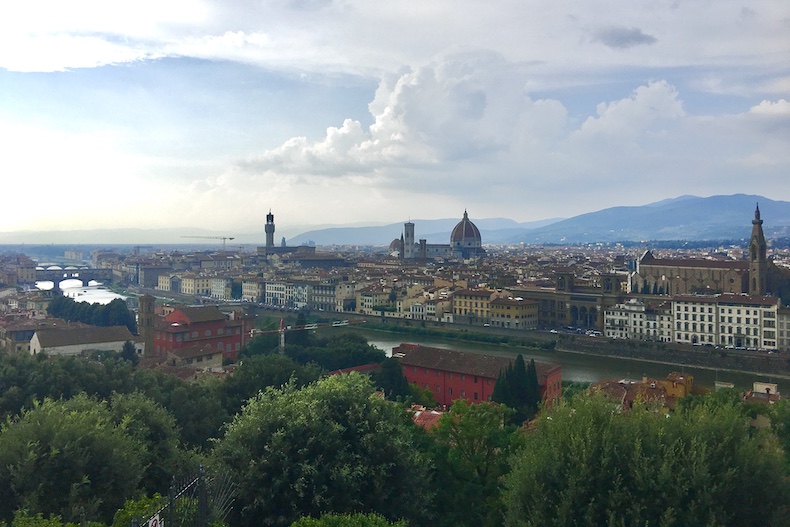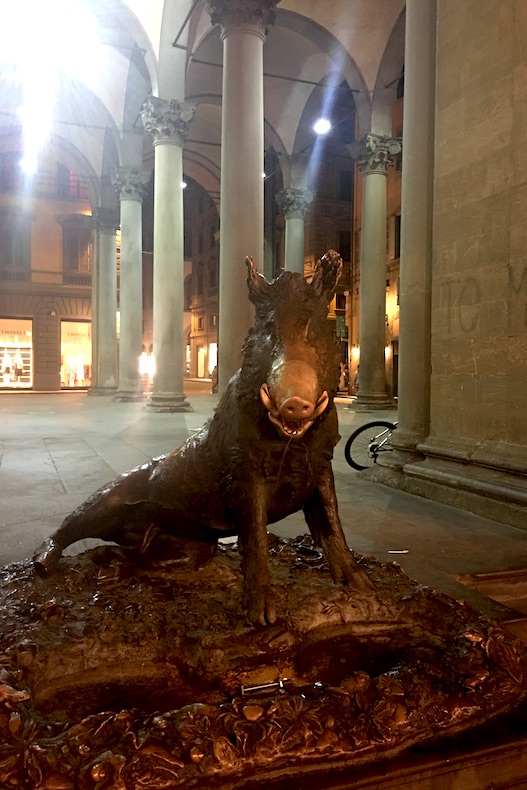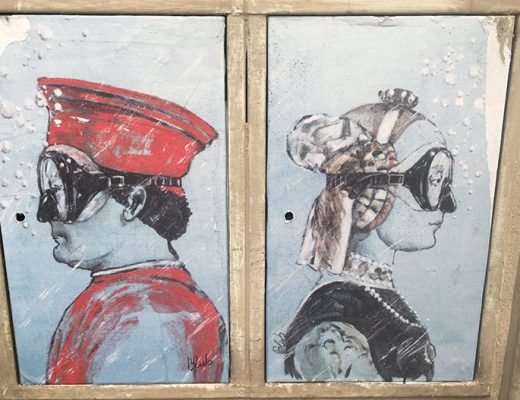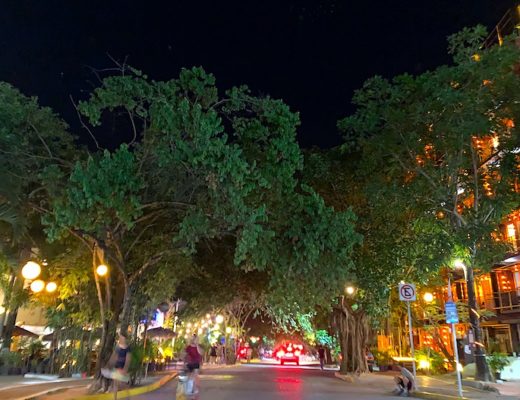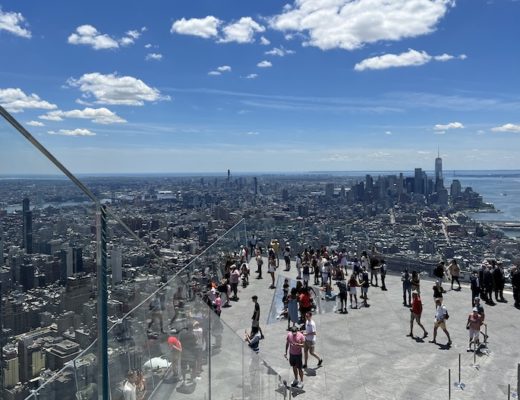Whoever tells you that half a day is more than enough to see Florence, really doesn’t know the city well enough. Simply imagine that it is the birthplace of the Renaissance, the one that revolutionized culture, society, and discoveries after the Middle Ages. Where illustrious characters such as Dante Alighieri, Leonardo Da Vinci, Machiavelo or Michelangelo were concentrated. A city where you can spend long hours just in a museum.
Unless you just want to go take a picture of the Ponte Vecchio for your social media, then you can see it in just a few hours, but that does not mean at all that it is a city that is known in half a day. In fact, you are missing the opportunity to explore and enjoy one of the most beautiful cities in Europe and one of the 100 most visited in the world.
How long do I recommend you to visit?
It all depends on the time you have for your trip. I have spent up to three months here and I assure you that I did not finish knowing it. But assuming that you want to include it in your tour of Europe, then I would recommend a minimum of three nights, especially if you want to add excursions and take Florence as a base. What to see during those days?
Churches full of art
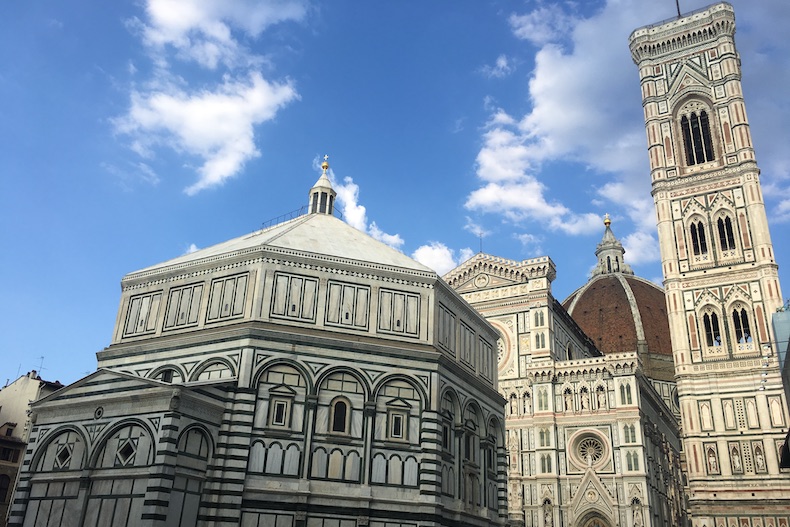
The Duomo Complex
The Cattedrale di Santa Maria del Fiore (Florence Duomo), was designed by Arnolfo di Cambio and is the third largest church in the world. From the outside it is dazzling, you really realize its size when you have a panoramic view of the city from a viewpoint, like the one I am going to recommend later.
One of the main attractions of the cathedral is its impressive dome made by none other than Filippo Brunelleschi, whose tomb is located in the crypt of the church. And yes, you can also climb it through 463 steps. How big is the dome? 114 meters high and 45 meters in diameter.
The Duomo Complex also includes the famous Campanile di Giotto, a marble-encrusted Gothic-style bell tower with a height of 84.7 meters, a very popular point among tourists who want to see the city from a bird’s-eye view from this famous tower. Opposite the church is the Battisterio di San Giovanni, with an octagonal structure, made of white marble from Carrara and green from Prato, with a Byzantine mosaic dome and doors richly decorated with reliefs.
Basilica di Santa Croce
Another great work by Arnolfo di Cambio. It is one of my favorites and not because of the church itself, but because the remains of Galileo Galilei, Niccolo Machiavelli and Michelangelo, among other famous people, are found here. I don’t know why but it never ceases to amaze me to be able to walk in the same place where their bodies lie.
Basilica della Santissima Annunziata
In my opinion the most beautiful church, it has many works of art inside, but there is one that is very famous because apparently it is the work of a miracle. Legend has it that in the year 1252, a monk began to paint the Annunciation, but could not get a beautiful enough image. So one night, as he fell asleep, an angel took it upon himself to finish the job and it is the painting that can be seen now.
Between palaces and the Medici
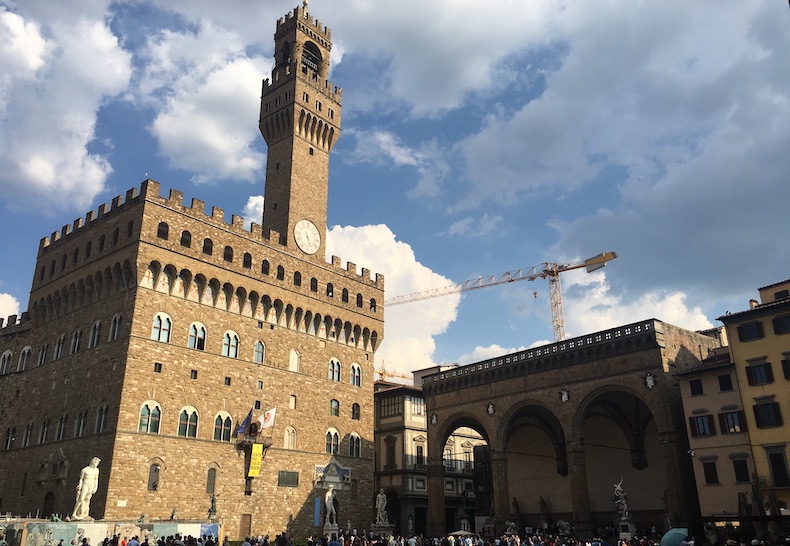
Palazzo Pitti and Giardino di Boboli
In the mid-16th century, Cosimo I de’ Medici and his wife Eleanor of Toledo bought this palace (named after its original owner Luca Pitti) as a residence and it became a reflection of Medici power in Tuscany. It was inhabited by two more dynasties until 1865. Today, you can see the museums including the Palatine Gallery and the royal apartments.
And once you are here, you can’t miss the beautiful Italian-style Boboli Gardens, which have set the fashion in many European properties. Spending a while here is also a break from the tourist bustle of the city, among gardens, sculptures and fountains.
Palazzo Vecchio
Seat of government for seven centuries, it is also the symbol of the city. Formerly called the Palazzo della Signoria, it was the residence of Cosimo I before he moved to the Palazzo Pitti. After his move it was called Palazzo Vecchio. Although it is still the seat of the Town Hall, it also houses the Ragazzi Museum and the Sala Cinquecento, a beautiful room for events and audiences.
Note: By the way, if you want to see more about this family, be sure to visit the Medici Chapel, where their tombs are.
Its squares and the best view of Florence
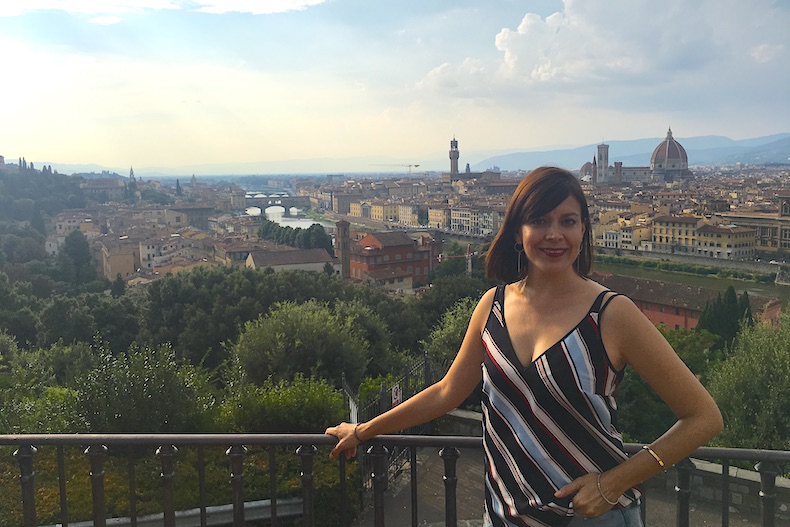
Piazzale Michelangelo
Here you will take the best panoramic photos of the city. By the way, the sculpture of David that you will see here, as well as the one you see in Piazza della Signoria, are replicas, since the original is at the Galleria dell’Accademia. If you have time (and energy to climb the stairs), I recommend you to visit the Abbazia di San Miniato al Monte, which is very beautiful.
From the square, I recommend you to return by foot descending the stairs that go through the Rose Garden and the old city gates. Stay on that side of the city -the “Oltrarno”-, which is on the other side of the Arno river, to enjoy the streets, squares and urban art. There are areas like Santo Spirito that have very cool restaurants and bars.
Piazza della Signoria
The most important square in the city because political power was concentrated here since the 14th century. Let us remember that here is the Palazzo Vecchio, and also the Galleria degli Uffizi, one of the most famous museums in the world. Sit down in the Loggia dei Lanzi (where the arches with sculptures are), and watch the movement of the city and everything around you; a very inspiring place!
Piazza della Repubblica
The powers were thus divided in the Florentine squares, the political in the Signoria, the religious in the Duomo and commerce in this precise place where, in the 19th century, the Piazza della Repubblica was built, conserving only the Column of the Abundance.
Museums
If you are going to make some time to visit at least the most famous ones, then you definitely have to include the Uffizi Gallery (for Botticelli’s “The Birth of Venus”) and the Galleria dell’Accademia (for Michelangelo’s David) on your list. But if you really want to extend your stay or see something else, you can find a wide variety of museums for all tastes, such as the Casa Buonarroti, the Leonardo Da Vinci Museum or the Salvatore Ferragamo Museum..
The most famous bridge
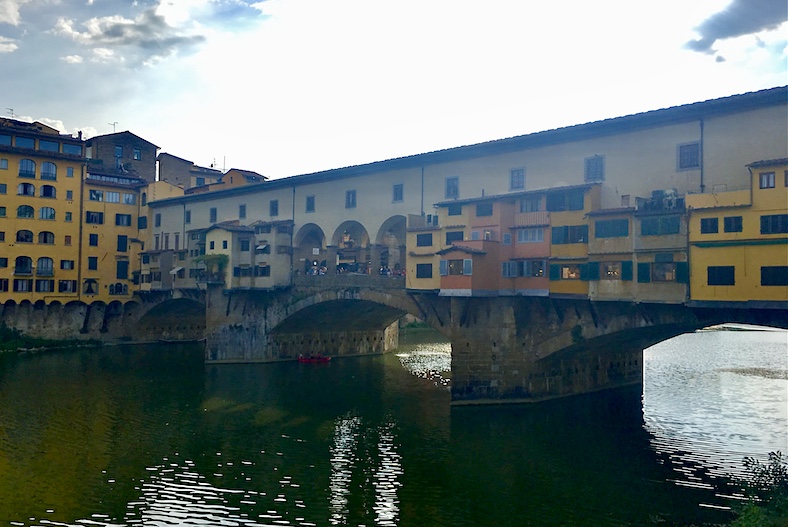
Ponte Vecchio
The icing on the cake, the incomparable Ponte Vecchio, built in the 14th century. It was the only bridge in the city that was not bombed by the Germans during World War II. It is said that it was by order of Hitler himself, but the Tuscany Tourism page explains that it was due to the help of Gerhard Wolf, who was consul of Germany and who also helped in the rescue of Jews and political prisoners, for which years later they made him a honorary citizen of Florence.
Today, it is full of jewelry stores, but in the past there were butcher shops. If you look from above you can see the Vasarian Corridor that Cosme I de’ Medici had built to connect the Palazzo Vecchio with the Palazzo Pitti without having to go outside.
The trick to return to Florence…
Fontana del Porcellino
Do not forget to find this fountain with a sculpture of a bronze boar made in 1633, where the tradition is to rub its snout and put a coin in it to attract good luck and ensure your return to Florence.
These are just a few places that I would consider unmissable, but in reality, you would lack time for the markets and above all to have the gastronomic experience, since its food and wines also need time to be enjoyed; it is Tuscany after all!
If you want to travel to Europe and would like me to organize your trip 100% customized through our travel agency Tripdreaming, please contact me at silvia.lucero@tripdreaming.com.

